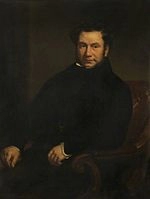How to Pronounce Benjamin Hick
#50
Most Popular
Boost
Aug 01, 1790 Leeds, England, United Kingdom Died on 09 Sep 1842 (aged 52)
British engineer
LeoBenjamin Hick, Date of Birth, Place of Birth, Family, Facts, Age, Net Worth, Biography and More in FamedBorn.com

British engineer
Leo